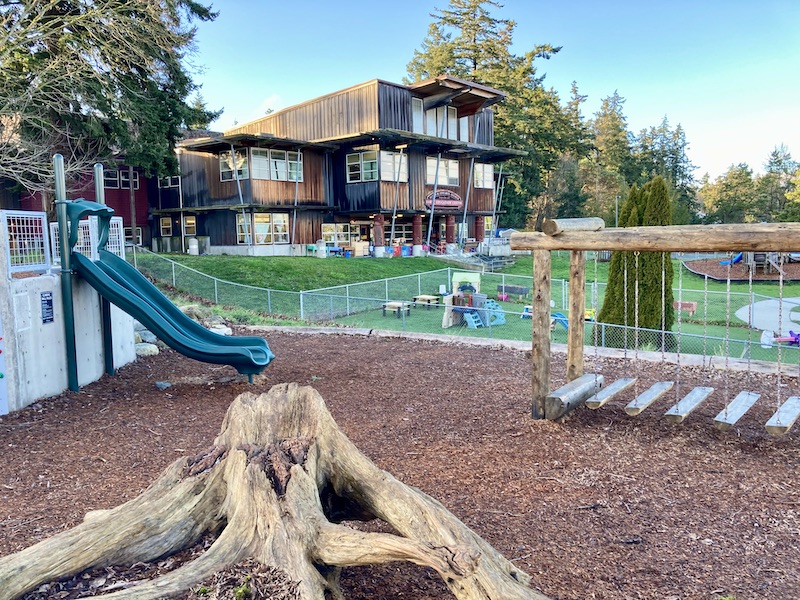Tales of the Magic Skagit: Swedebs Park Tells the Swinomish Journey
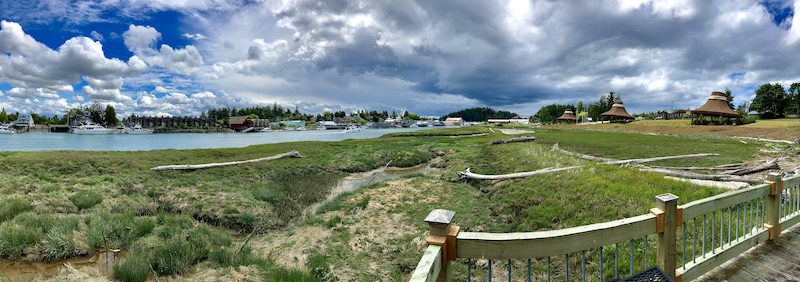
I am never fulfilled without my home.
I’m comforted by the mountains that
surround me, for they are my aunties.
The morning dew quivers my spine, that cold
rush of blue air shivers me.
My uncles who serve the ocean, fish for
guidance, earning their respect from the sea.
The water is where we learn about the
relationship between all living things;
that relationship is ours to earn.
The salmon are our children; we must protect
them so they can carry strength upriver to
our aunties.
Our older brother the animal has taught us
how to survive; our younger sister the sun
will always show us the light.
The stars are bright shining on our
grandfather the moon, who waits to hear
from grandmother as she sends her messages
through the blowing of the wind.
The message is for the people of Swinomish:
take care of our land.
Our ancestors lie within, protecting us,
waiting for our return to them.
We live in the trees, this is our home.
We can never be fulfilled without this place
we call home.
“Swinomish” by Caroline Jana Edwards
Swinomish Tribal Member (2011)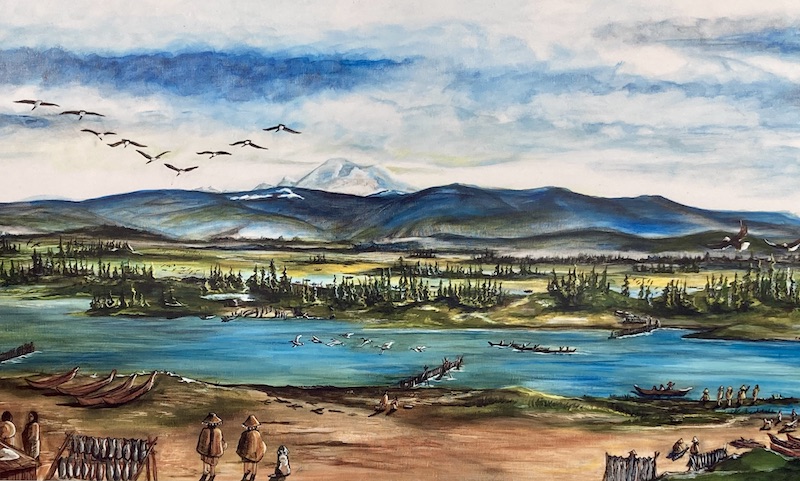
Where You Now Stand
Travel across the Rainbow Bridge to the western banks of the Swinomish Slough and look toward Komo Kulshan (aka, Mount Baker). Now, close your eyes and stretch your imagination back more than two centuries ago.
The year is 1790, and you are in the village of Txiwúc. To the east, people fish and hunt in the rich delta of the Swinomish Flats, a fertile landscape crisscrossed with sloughs and channels that offer abundant resources for those who refer to themselves as “people of the salmon.” Men tend fishing weirs and basket traps in the Swinomish Slough running in front of the village. Women dry salmon and shellfish on the beach, keeping close watch on their children. In the longhouse, elders weave baskets, warming themselves before bright fires.
The site where you now stand has changed dramatically since the late 18th century. The channel in front of you was once a winding, narrow slough, so shallow that one could wade across it at low tide. Beyond stretched a river delta that supported a thriving fishery and habitat for hunting and gathering — landscapes that had sustained their inhabitants for thousands of years. But in less than a century, this ecosystem would be forever altered, along with its people. This is the story of the Swinomish Journey, as told by a place called Swedebs Park.
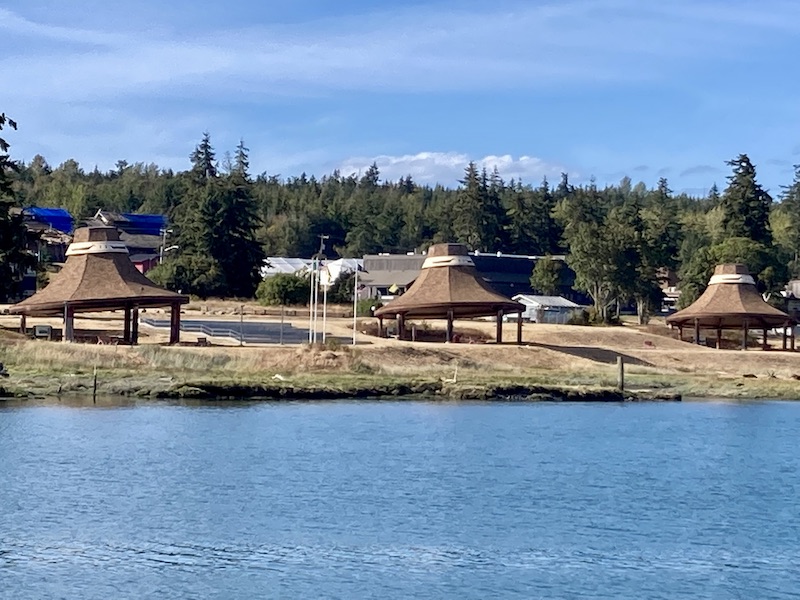
I didn’t know what I was looking at the first time I beheld Swedebs Park from the east bank of the Swinomish Channel in the pioneer town of La Conner, Washington. The purpose of the three large conical structures, visible just north of the Rainbow Bridge on the Swinomish Reservation, weren’t immediately apparent to me, but at some point I realized that they functioned as shelters. Later on, from seeing pictures of tribal events in the daily paper, I realized that these shelters were designed to resemble the woven hats that Lewis & Clark would praise for their combination of elegance and utility in protecting their wearers from the elements. Eventually, my wife and I made the trip across the Rainbow Bridge for a closer look. That experience has profoundly affected my appreciation for the history of the Magic Skagit.
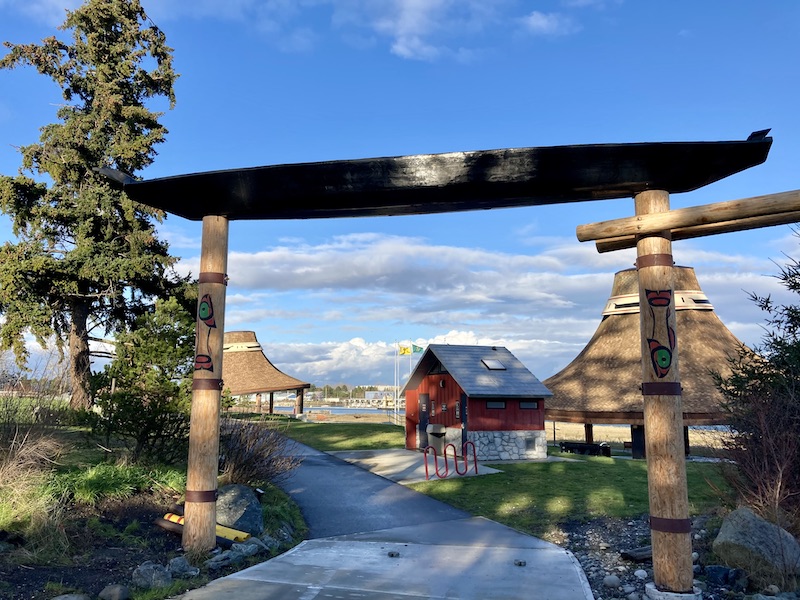
Swinomish Journeys
If Swedebs Park were no more than a vista, it would still rate a “must see” on any visitor’s guide to the Skagit Valley. On a clear day, the view of La Conner from across the channel, with its backdrop of Mount Baker and the Cascades, is postcard perfect. Living so close by, I’m no longer envious of calendar photos of New England fishing villages. I can never cross the Rainbow Bridge without thinking, “How do you like us now, Cape Code?”
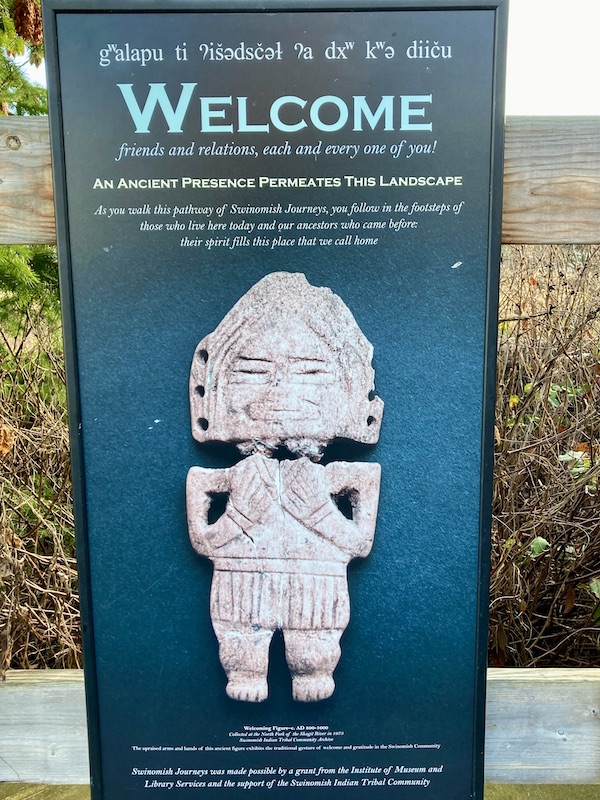
But Swedebs Park is a journey, not just a scenic view. Walk under its canoe arch and a sign that greets you tells you what to expect along the path before you. A welcoming figurine — the image of an “artifact” collected at the North Fork of the Skagit River in 1973 and dating from between 800-1,000 AD informs you, with arms upraised in a traditional gesture of welcome, that “an ancient presence permeates this landscape” (just in case you hadn’t felt it the moment you entered). The sign further states, “As you walk this pathway of Swinomish Journeys, you follow in the footsteps of those who live here today and our ancestors who came before: their spirit fills this place that we call home.”
It’s no exaggeration to say that an investment of a couple of hours in this place of beauty will richly reward you with a deeper appreciation of Swinomish culture and history. Like most histories, it is fraught with enduring themes of conflict, adaptation (if not resolution), and above all, endurance. Walk the former site of Txiwúc and take in the signage (we love signage at Meyer Sign) so wonderfully and dynamically created through a grant from the Institute of Museum and Library Services and the support of the Swinomish Tribal Community. You’ll learn the origin story of the Swinomish (spoiler alert: a cataclysmic flood is involved), and as you read the signs identifying the flora and fauna that sustained a way of life for millennia, you’ll appreciate not only the genius of a people in adapting to the natural world, but the culture that was created through that adaptation.
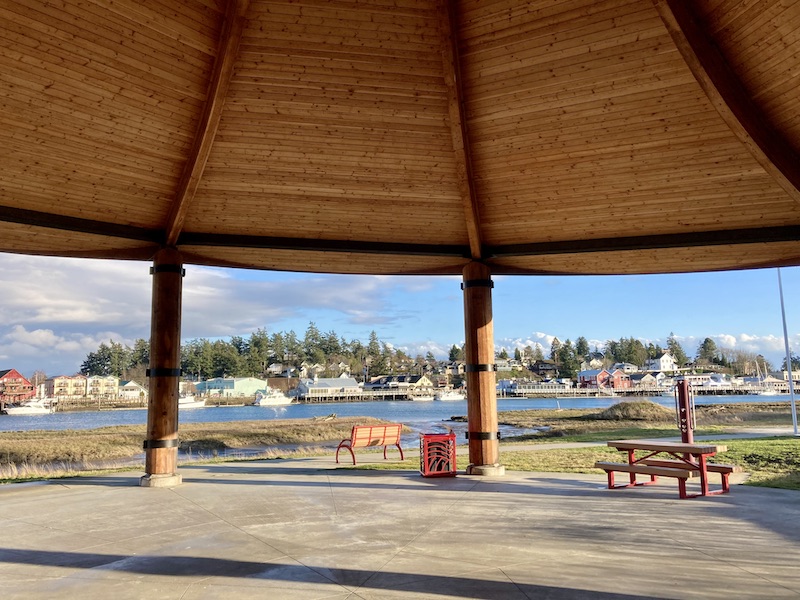
You’ll also learn the history of the tribe, and how dramatically that history was altered following its first contact with Europeans. It’s a difficult story, but one that requires no hyperbole beyond its brutal facts. It could easily be one of abject victimhood, were it not for the fact that it is being told by the very people who remain to share it as they honor and preserve their past. Most important for all of us, indigenous and newcomer alike, is that the story is still unfolding — and to the extent that it is about a place that all of us call home, it’s OUR story as Skagitonians, however far back we trace our connections to it.

As you continue along “this pathway of Swinomish Journeys,” however, you’ll also encounter the past as prologue. The pre-school and playgrounds at the north end of Swedebs Park speak to the future, as do the nearby community center and health clinics. It’s a future predicated on a people’s continued covenant with a Creator and the gifts of nature the Creator has bestowed with the expectation of faithful stewardship. Swedebs Park invites us into that future, as well as explaining the past.
Swedebs Park Stories
Over the next few weeks, Tales of the Magic Skagit will devote several episodes to the narrative of Swedebs Park. We’ll start with the creation story of the Swinomish and the way of life they pursued for thousands of year. Another episode will consider the history of the tribe “post-first contact,” and the existential threat that subsequent events imposed on its very existence. Our final episode, again taken from the informational displays at the park, will be “A New Spirit” — a look at the accomplishments of the Swinomish Tribe in not only rescuing a culture and the relationships that sustained it, but how that culture is being passed to a new generation as well as to the broader community outside reservation boundaries. This is, in the end, a story of hope and redemption that belongs to us all.
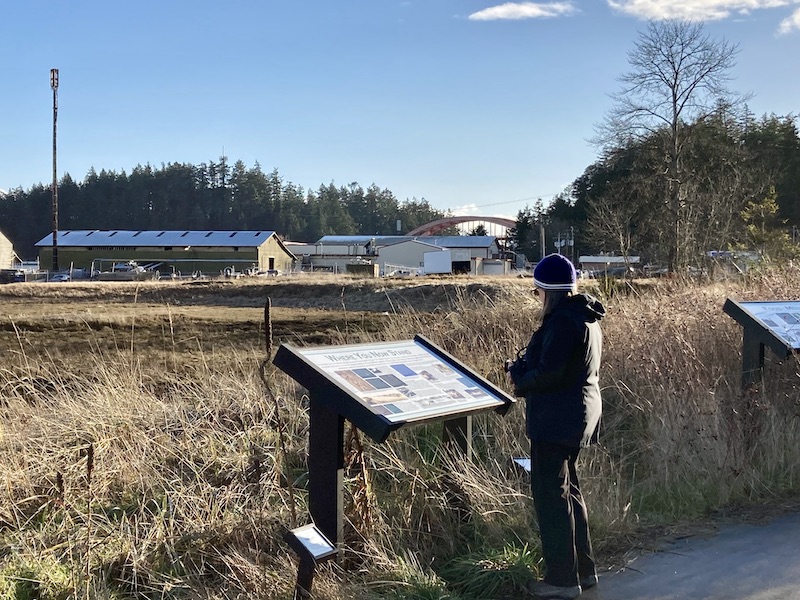
I’ve taken this project on with some trepidation. As a writer and historian who lacks the first hand knowledge of what it means to be a part of the Coastal Salish community, the worst act of appropriation I could think of would be to write these stories with a hubristic sense of authorship. I’m merely sharing them, thanks to places such as Swedebs Park, the Skagit County Historical Museum, the Hibulb Cultural Center, the Burke Museum…and to the folks from the tribal community who have welcomed me into their history and heritage. It is a gift blanket that warms my heart, and one that I hope will warm those of our readers. That said, I invite those among our Tales of the Magic Skagit audience to share the intersections of their own lives and these stories. After all, to quote Caroline Jana Edwards, “We can never be fulfilled without this place we call home.”
Peace!
